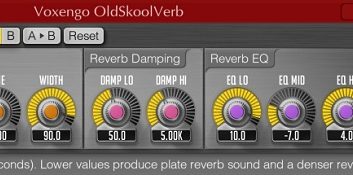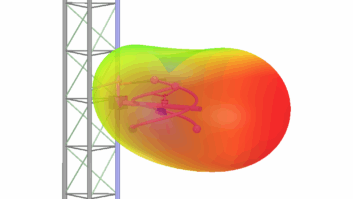
Marvel Graphic EQ Russian software developer Voxengo, helmed by Aleksey Vaneev, offers a host of VST and AU plug-ins for Windows and Mac-based DAWs — from mastering EQs and compressors to tube amp simulators.
They also offer over a dozen plug-ins as free downloads at www.voxengo.com. These plug-ins are pretty impressive for freebies, so much so that I contacted Aleksey to ask him why he was giving them away.
The short answer is “exposure.”
“Offering some plug-ins for free is a good marketing practice that brings website visitors that may later be interested in paid plug-ins,��� he explained.
Fair enough. He also said that, technically speaking, there is no difference in sound quality between the freebies and the rest, they just offer slightly different features.
I took a look at four Voxengo plug-ins: the Marvel GEQ linear-phase graphic EQ, the Overtone graphic EQ, the MSED mid/side stereo processor and the SPAN real-time spectrum analyzer.

Overtone Graphic EQ The Marvel, at first glance, is a basic 16-band graphic equalizer. It supports multichannel and mid/side processing at multiple sample rates. Because it’s a linear-phase equalizer, it doesn’t suffer from the phase shift that occurs when boosting or cutting a given frequency. Its interface, like the others, is very neat and attractive.
A feature common to all Voxengo plugs is the A/B selector, allowing the user to program two settings and quickly compare the two. Its “underlay” feature allows users to compare two settings graphically as well, showing the previous setting “ghosted” under the present setting.
As far as sound quality, there really is something to maintaining linear phase. This EQ does a great job at keeping the high end from sounding brittle, even at fairly aggressive settings. Comparing this to other graphic EQs, the overall sound was similar, but the Marvel was much less fatiguing to listen to.
The Overtone is a seven-band graphic EQ geared toward processing overall mixes. Unlike the Marvel, this one has sweepable frequency bands. It also includes two sets of controls, making it easier to work on multichannel or Mid/Side projects.

MSED Mid/Side Processor This is a great output buss EQ that held its own against similar plugins. The sweepable frequencies made matching settings with other EQs a snap. I only wish it was possible to do away with the extra set of controls when not in use. When working with multiple plug-ins, it can get confusing.
Speaking of M/S processing, next up is the MSED, a simple-to-use M/S processor. It can operate as an encoder, splitting the stereo signal into discrete mid (L+R) and side (L–R) channels; or as a decoder, taking such information and creating a proper L/R stereo signal. It can also operate in “inline” mode, allowing real-time adjustments of mid/side information. Other features include channel swapping and polarity reversal. It’s a handy tool for doctoring the stereo spread of your audio and making sure it’s mono-compatible (still a concern in radio).

SPAN Spectrum Analyzer Finally, we have the SPAN. This is a real-time FFT spectrum analyzer with output level and phase correlation meters. It shows RMS and peak values as well as maximum crest factor. Another nice feature is the K-metering setting for the output meter. K-metering is a standard developed by mastering engineer Bob Katz that is fast becoming adopted in film and television audio mastering. It provides a standard level of loudness that should translate well to multiple playback systems. The SPAN provides a free yet effective solution for dissecting audio.
In an upcoming issue I’ll take a look at a few more free offerings from Voxengo, including their Old Skool Verb, Stereo Touch and Beeper plug-ins.







